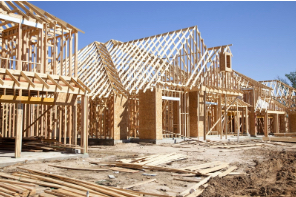 Homebuilding is the process of constructing a new home. It involves a lot of planning and attention to detail, but it’s an exciting way to build the home of your dreams.
Homebuilding is the process of constructing a new home. It involves a lot of planning and attention to detail, but it’s an exciting way to build the home of your dreams.
Many people enjoy watching their new home take shape from start to finish. They like seeing the foundation being poured, the framing going up, and the drywall getting installed. Visit https://jrcsi.com/ for more details.
A home is probably one of the most important investments you’ll make in your lifetime. It should be built with careful consideration given to materials, structure, and longevity. It’s easy to get lost in the details of flooring, paint colors, and pretty kitchen backsplashes when planning for your new home, but it’s crucial to focus on the foundational elements that will keep you safe and secure for years to come.
It’s a good idea to work with a professional, reputable architect and builder when building your new home. They can help you refine your vision and turn it into an actionable blueprint. They will also handle cost breakdowns, project scheduling, and subcontracting issues.
Once construction begins, you’ll start to see your new home take shape. The first major milestone is the framing stage, which is when the skeleton of your home is put in place. You’ll start to see the shape of your home emerge as the frame goes up and the windows and doors are installed.
Many production builders offer homes in pre-planned communities where the buyers share a common ownership stake. These communities often include trails, playgrounds, and proximity to shopping. Production builders also study consumer surveys, employ mystery shoppers, and comb over economic and demographic data to ensure they’re building the right homes for their market.
Another important factor is resale value. You may not want to live in your new home forever, so it’s a good idea to plan for resale in the design phase. You’ll need to consider what kind of features you can afford and which ones might bite you later when it comes time to sell.
If you’re building in a community with an HOA, it’s a good idea to request a copy of the covenants, conditions, and restrictions (CC&Rs). These will cover any rights, rules, and regulations that apply to your property. These can affect anything from minimum or maximum square footage to exterior paint options and landscaping. Failing to comply with HOA guidelines could result in fines and other fees.
Designing a Home
Your house isn’t just a place to sleep, work, and play; it’s a reflection of your personality. This is why it’s important to take the time to design a home that aligns with your vision and lifestyle. The first step in the design process is creating project goals. This will help you determine the features and finishes that will make up your dream home.
Your goals should include both quantitative and qualitative descriptions of your ideal home. Quantitative descriptions include the number of bedrooms and bathrooms, while qualitative descriptions describe how the home will feel. The goals will be used to create a detailed home plan that will serve as the blueprint for construction.
It’s also important to consider the style of the home. Choosing a particular style can have a huge impact on the overall look and feel of the home. It’s a good idea to spend some time researching different styles before starting the design process.
A good way to get inspired is by touring neighborhoods and looking at homes that catch your eye. You can even hire a professional home designer to help you with the process. Just be sure to find a professional who has experience designing homes similar to yours and shares your design aesthetic.
Once you’ve finalized your home plans, it’s time to start drafting budget estimates. This will help you determine if the home is within your price range and will allow you to make changes if needed. It’s best to get this done early on in the design process so you don’t end up with a house that you can’t afford.
The last thing you want is to have your home builder change your plans midway through construction. This can be a costly and frustrating experience. To avoid this, be clear about the layout of your home and any special features you’d like. You can even draw a diagram of your home and label the areas to make it easier for your builder to understand. This will save you time and money and ensure that your home is built exactly the way you want it.
Budgeting for a Home
One of the most important steps in buying a home is developing a budget. Though the dreaded word “budget” gets a bad rap, this is an essential tool that can help new homeowners determine how much they are capable of spending on a home.
The first step in developing a budget is determining how much of your income will go toward the mortgage payment. A common rule of thumb is to not allow more than 28% of your monthly income to be devoted to housing costs. This is a standard that many mortgage lenders will use as a guideline when approving a loan for a new homeowner.
New homeowners should also consider other monthly homeownership expenses, such as property taxes and homeowner’s insurance. In addition, some homes are part of a homeowners association (HOA), which requires monthly fees to maintain the community. Finally, homeowners should plan on setting aside savings for unplanned home maintenance and repairs.
Choosing a Builder
Building a home can be quite a complex project. You will need to hire a builder who can take your home’s design and construct it on site. The builder will then subcontract a variety of specialized tradespeople to complete the work. You can also act as an owner builder and do some of the construction yourself, but you will still need licensed tradespeople to complete certain works (for example, electrical and plumbing). A professional builder will be able to provide quotes, contracts, and support throughout the entire process. When choosing a builder, look for one you can envision working with on a long-term basis.
Ask builders to provide you with references from previous clients. Call the clients and ask them about their experiences with the builder. Find out if they felt the builder was honest, respectful, and communicative. Find out how long it took the builder to respond to any issues that arose during the course of the construction.
When you meet with a potential builder, ask about the processes they use to ensure quality control. Find out if they have a quality assurance manager who oversees the entire project. Also, find out if they have a dedicated team of people who are responsible for managing the builder’s client service and customer satisfaction.
You can also check out online chat boards to see what other homeowners are saying about a particular builder. Look specifically for complaints about going over budget, not building the home as designed, or failing to fix problems in a timely manner.
Once you’ve shortlisted a few potential builders, visit their model homes and homes under construction in their communities. This will help you get a feel for the style of building each one is known for and whether or not they offer the level of choice you’re looking for.
When visiting a home under construction, pay special attention to the workmanship and materials used. Look for quality brands, attractive finishes, and an overall high standard of finishing. Lastly, find out if the builder provides an owner’s manual that details the operation and maintenance of your new home.

